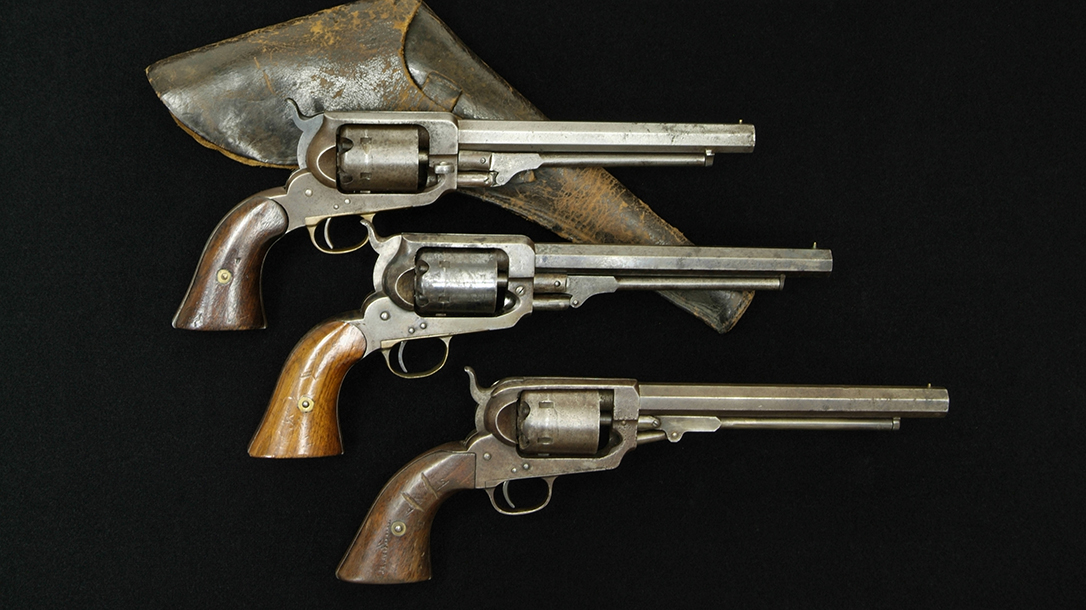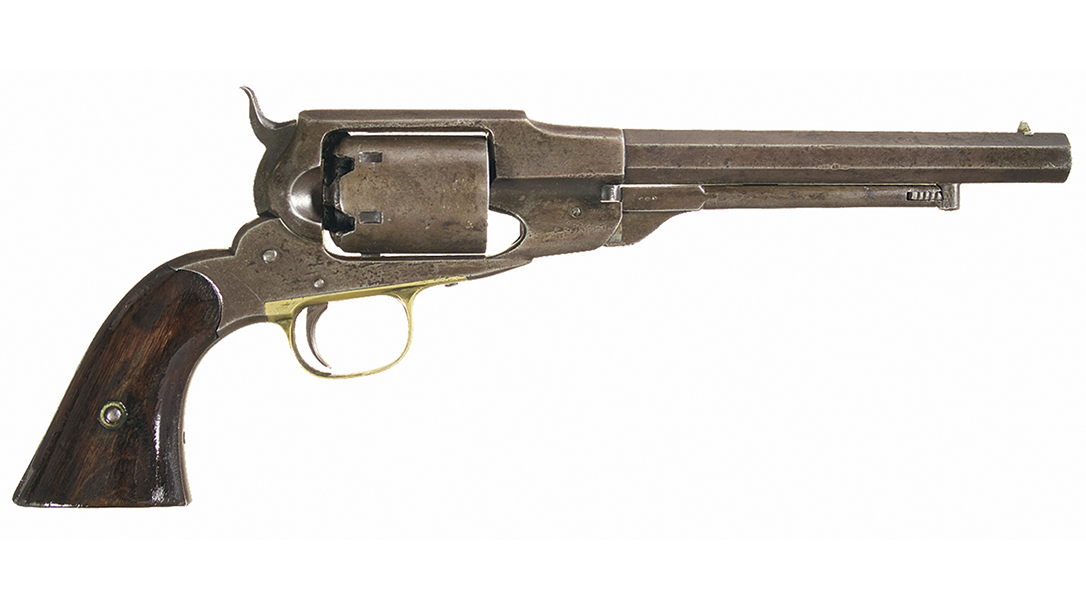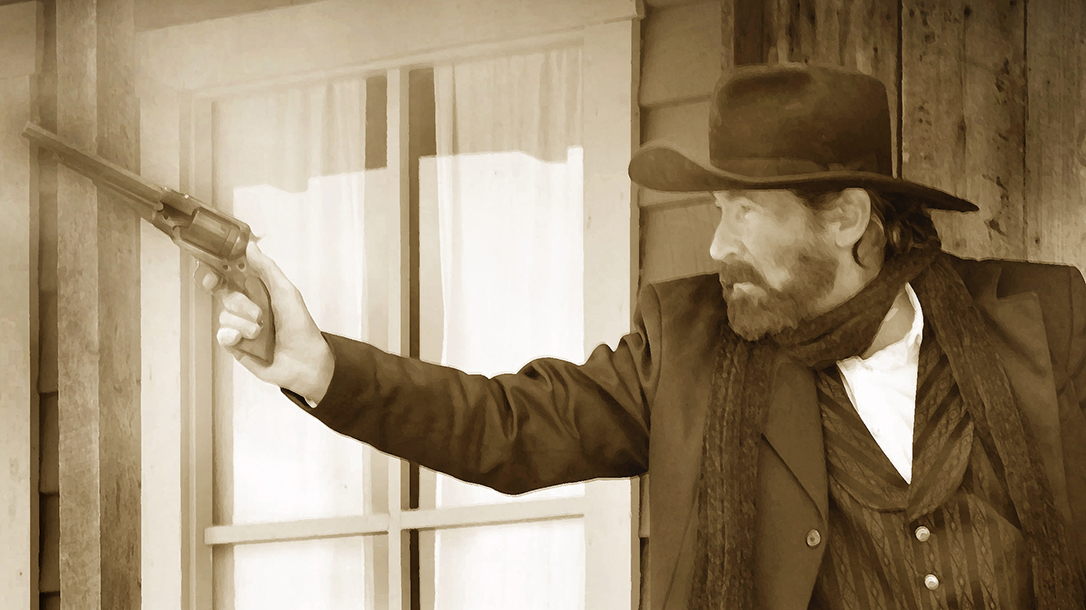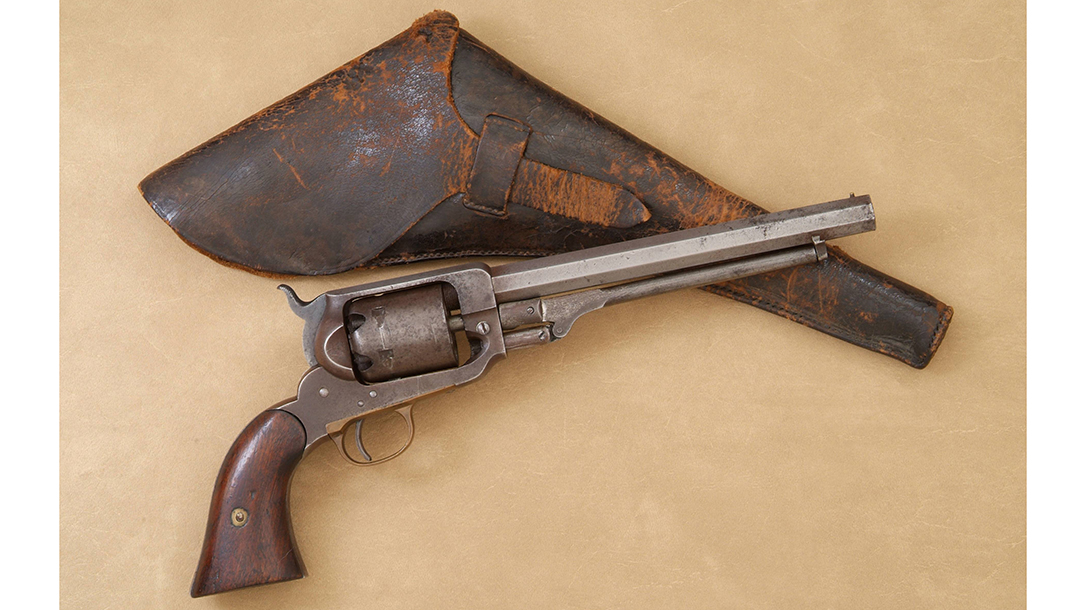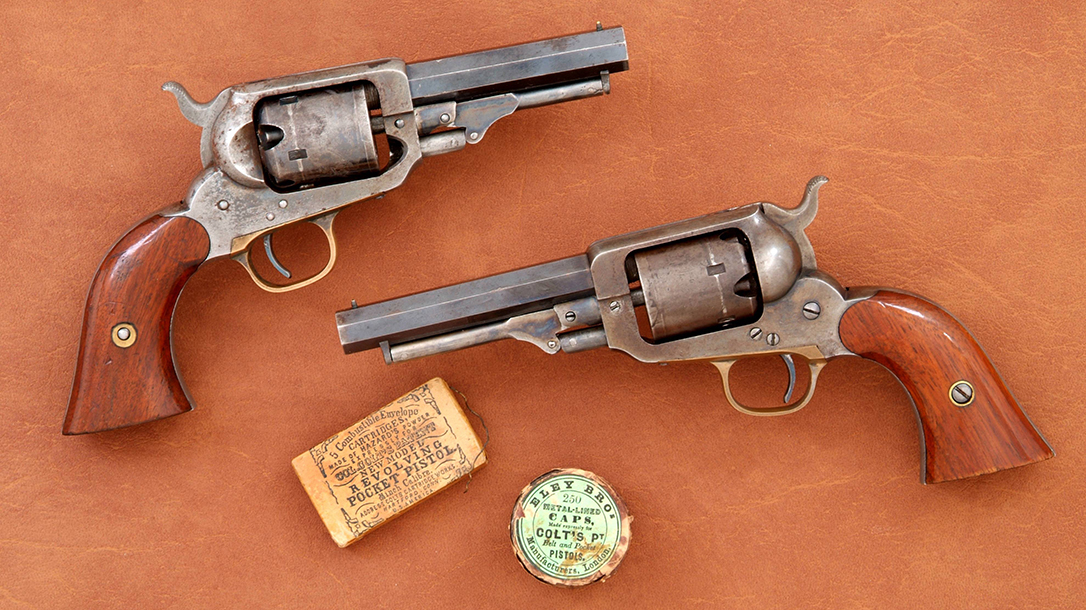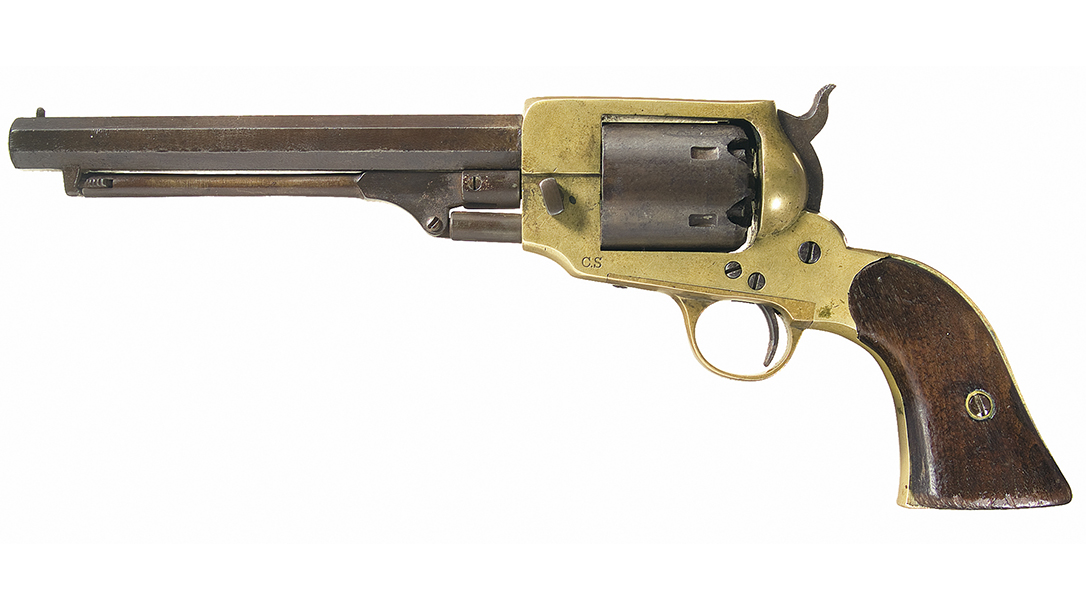In 1847, Samuel Colt had a U.S. government order in his hand for 1,000 new .44-caliber revolvers, which would restore life to his career as an arms-maker. But he no longer had a factory or the tooling to build the firearms. His design for the massive, six-shot holster pistol—later christened the Walker Colt in honor of the revolver’s co-designer, Texas Ranger Captain Samuel Walker—required an experienced arms manufacturer to tool up and build. And it had to be done quickly to fulfill the terms of Colt’s contract.
The urgency came from the fact that the country was engaged in war with Mexico, and the demand for the new revolver came from the U.S. Mounted Rifles fighting along the Texas border and into Mexico. Samuel Colt turned to Eli Whitney Jr., the only man he knew who had the immediate capability to produce the guns. And thus, the first Colt models since the failure of his Patent Arms Manufacturing Company of Paterson, New Jersey, in 1842 were not built by Samuel Colt, but by Eli Whitney Jr. at his Whitneyville Armory in Connecticut.
Advertisement — Continue Reading Below
Whitneyville Armory
The original Whitneyville Armory had been established by Whitney’s father in the late 1700s; it had been building arms for the U.S. military since the 1790s. The elder Whitney, best remembered for inventing the cotton gin, passed away in 1825 while his son was still a young boy. The elder Whitney’s nephews, Philos and Eli Whitney Blake, managed the armory until 1835. After that, it came under the control of Henry W. Edwards and James Goodrich until 1842, when Eli Whitney Jr. (an 1841 Princeton graduate) stepped into his father’s position as head of the armory at the age of 22. His first venture was to negotiate a U.S. government contract to manufacture the U.S. Model 1841 rifle. Between 1842 and 1855, the Whitneyville Armory produced 22,500 of these rifles along with other firearms and accessories.
Eli Whitney, Jr.
A gifted engineer and designer, Whitney Jr. reorganized and expanded the Whitneyville Armory to increase manufacturing. By late 1846, the 24-year-old was sitting down and exchanging ideas with Samuel Colt before stepping into the role of manufacturer to fulfill Colt’s military contract. Within six months, starting with some old tooling from Colt and the prototype he had developed with Walker, Whitney built the tooling and produced 1,000 Colt Model 1847 Army pistols for the government contract, and another 100 for Colt to sell as civilian models.
A decade later, in 1857, Colt’s patent extension expired, opening the floodgates for other manufacturers. Arms-makers sprang up throughout the New England states, with many in Connecticut—some right in Colt’s own backyard, in Hartford and New Haven—and others in Pennsylvania, New York and Massachusetts. Eli Whitney Jr. followed suit and began building revolvers. In 1861, he changed the name of his historic Armory to the Whitney Arms Company. (Whitney revolvers were also known as Whitney Navy and Eagle Company revolvers.)
Advertisement — Continue Reading Below
Whitneyville Armory Handguns
Eli Whitney Jr. had become close to Samuel Colt after collaborating on those early revolvers, including the transitional Whitneyville Hartford Dragoon introduced in the latter part of 1847. Nevertheless, immediately after the expiration of the Colt’s patent extension, Whitney had no reservations about manufacturing a new revolver of his own design in 1858. By the start of the Civil War, Whitney had revolvers of several different sizes and calibers in production. Soldiers on both side of the Mason-Dixon line used them.
While Colt’s massive Hartford Armory was the primary manufacturer of revolvers for the Union throughout the Civil War (with no small thanks to Whitney for helping relaunch Colt’s career), the U.S. Army and Navy also procured more than 18,000 Whitney revolvers between 1861 and 1865. Whitney revolvers of all sizes and calibers amounted to more than 30,000 guns during the Civil War. Many civilians and individual soldiers purchased them.
Advertisement — Continue Reading Below
Apart from his first model, which resembled the Colt Model 1851 Navy, the majority of Whitney’s revolvers bore a far greater resemblance to Remington designs. Produced through the early 1860s, the Whitney designs were also similar to other solid-frame revolvers of the period, like the Rogers & Spencer, Marston and Freeman.
Looking at the design, it was easy enough for someone unfamiliar with a Whitney to mistake it for a Remington, which had been more commonly seen in the hands of Union soldiers. Nevertheless, Whitney’s guns were also popular among soldiers, and many carried them west after the Civil War ended.
Advertisement — Continue Reading Below
Spiller & Burr
One gun, other than a Remington-Beals, that looked like the Whitney was the brass-framed Spiller & Burr, built in Atlanta and Macon, Georgia, during the Civil War. In fact, it was a blatant copy of the .36-caliber Whitney model designed by Edward Spiller, nephew of Lieutenant Colonel James Henry Burton of the Army, and David Burr, a respected Richmond, Virginia, industrial engineer. They formed Spiller & Burr with a contract to produce 15,000 revolvers for the Confederacy in a period of two and a half years. It set up production in a government-owned factory in Atlanta, but manufacturing proved more difficult than Spiller and Burr expected. You can copy Eli Whitney Jr., but that doesn’t make you Eli Whitney Jr.
After more than a year with very little manufacturing and a great deal of arguing and negotiating, on January 7, 1864—out of desperation—the Confederate government purchased the entire Spiller & Burr company, patents and tooling for $125,000. Production moved to Macon, Georgia for the duration of the war. The design was so close to those of the Whitney revolvers, except for the brass frames, that the Southern versions also came to be known as “Whitney” models.
One could say that Whitney’s small-frame pocket pistols were blatant copies of the Remington New Model Police single-action models with 4½-inch barrels. But in fact it was the other way around. Whitney Pocket revolvers were manufactured from the late 1850s to the early 1860s. Meanwhile, the Remington wasn’t introduced until the end of the Civil War. The smaller .31-caliber Whitney pistols were also popular with soldiers. They purchased them as backup guns to be kept in pockets or tucked away for easy retrieval.
Advertisement — Continue Reading Below
Surviving The War
During the Civil War, small arms manufacturers sprang up across the South. Most produced only a few hundred examples before Union forces captured or razed their arsenals. Other small manufacturers in the North and South managed to survive and prosper during the course of the war. The ceaseless demand for sidearms on both side no doubt benefitted those manufacturers. However, forgotten or little-remembered guns, footnotes in the pages of Civil War history books, litter American arms-making history. Eli Whitney’s revolvers, and the Whitneyville Armory, were not among those, but rather among the guns of the gunfighters.
This article is from the Summer 2019 issue of Guns of the Old West magazine. Grab your copy at OutdoorGroupStore.com. For digital editions, visit Amazon.
